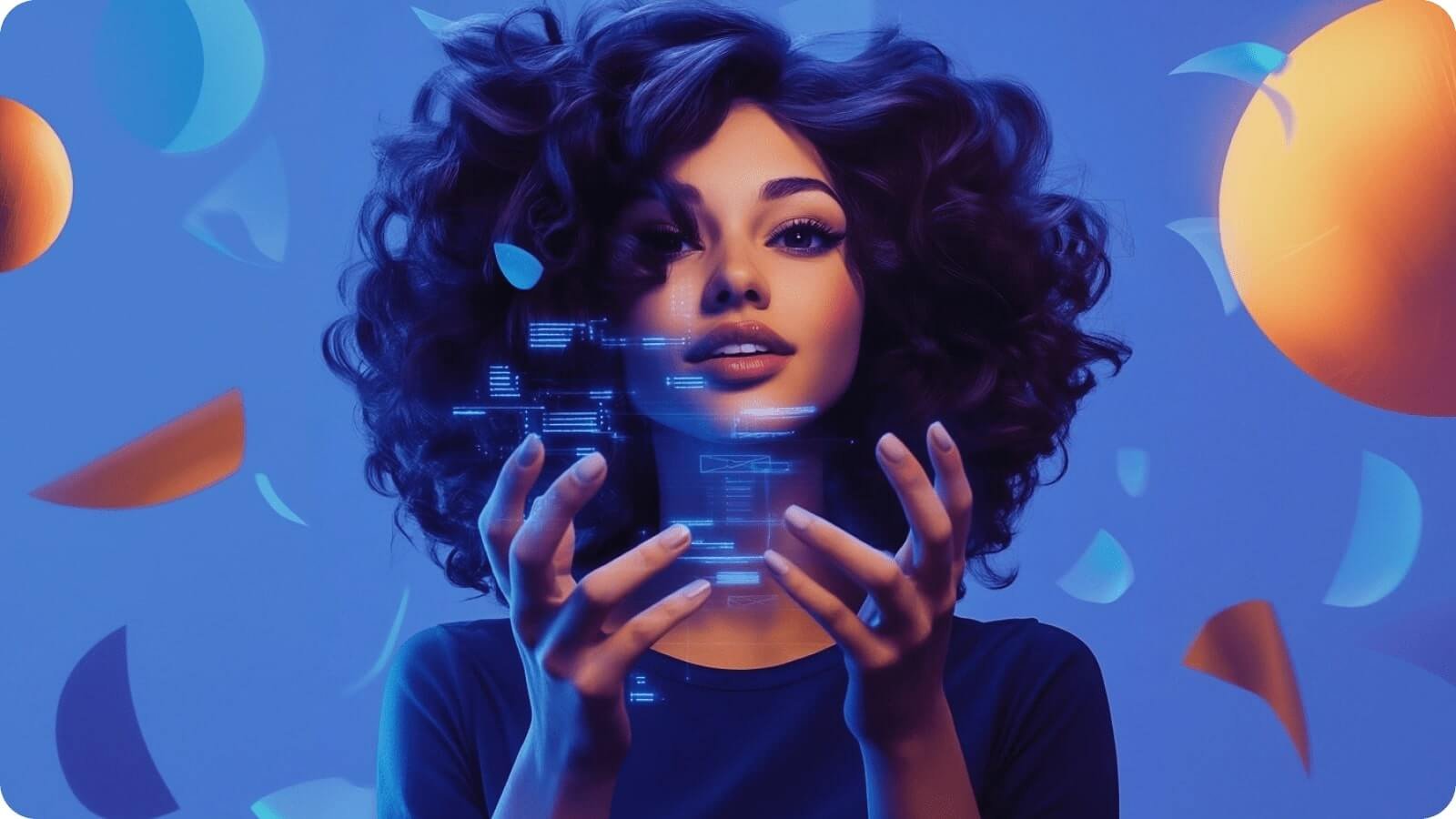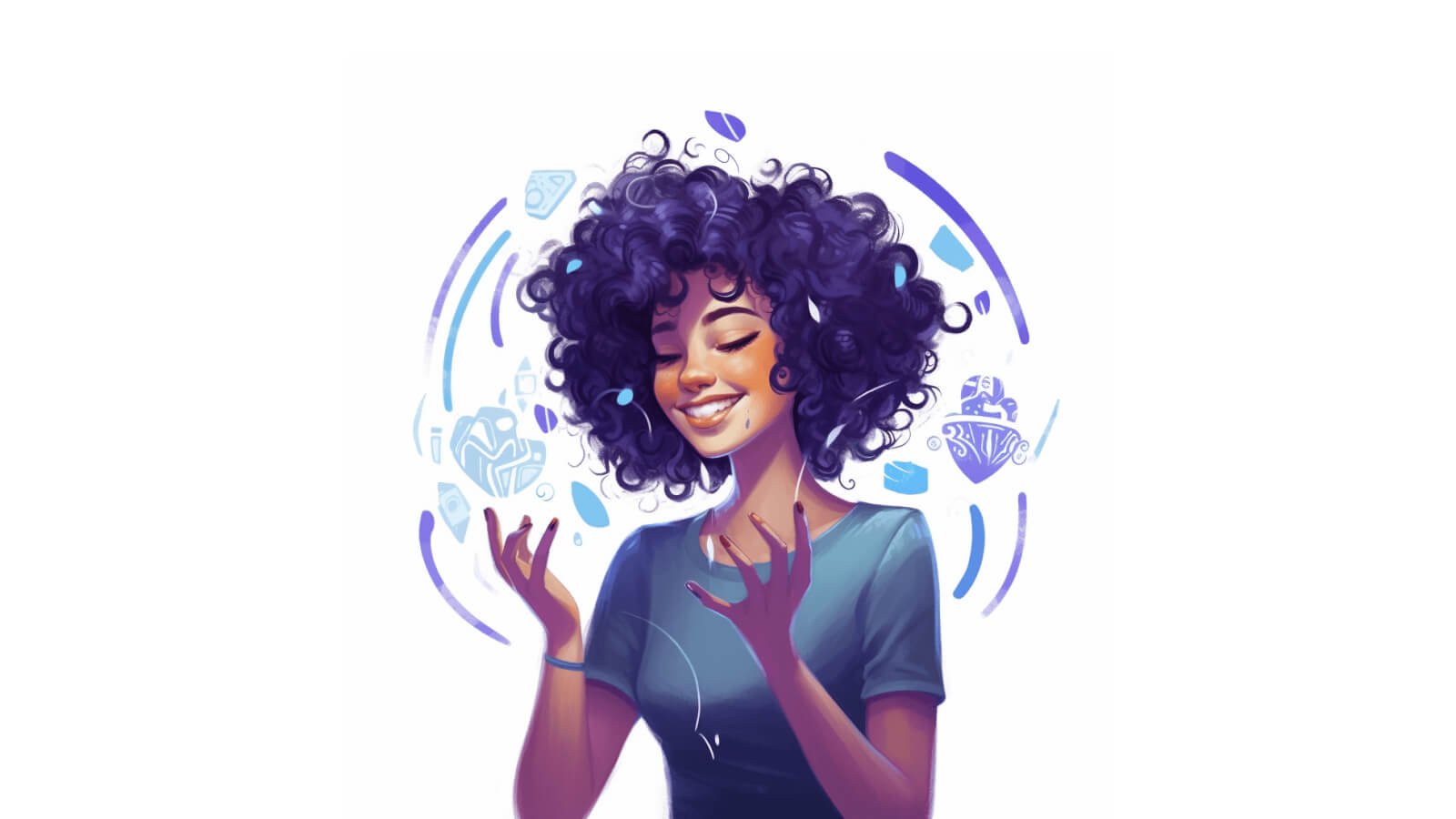Building and Refining a Character Using Midjourney and Runway
This article was enhanced using Grammarly to check grammar mistakes and improve clarity, but the content is original.
In this tutorial, I will focus on some handy Midjourney features that can let you quickly refine the images you generate. Whether you're a product designer, visual artist, or content creator, if you are considering trying the tool and want to understand how to enhance your visual compositions and characters, keep reading.
The base image is an AI-generated image. I am using the 6.1. version. You can use Midjourney through Discord or the web. I am using the web version in this guide.
This article assumes some basic knowledge of Midjourney, digital design, and photo editing, such as working with images, layout, and composition. The guide covers features like adjusting image size, erasing undesirable elements, and modifying aspects of an image through prompts.
What is Midjourney?
Midjourney is a tool for generating AI images. You can write a prompt, and you will be able to create an image. You can specify the style (cartoon, drawing art, photo-realistic, etc.), the feeling, the colours, and more.
The image generation tool stands out for its ability to generate high-quality images and creative visuals tailored to specific artistic approaches.
Midjourney can help designers explore design directions, build characters and create the best image to convey a particular message.
Using the /describe command to improve your Midjourney prompts
Midjourney defines the "describe" command as:
The /describe command allows you to upload an image and generate four possible prompts based on that image. Use the /describe command to explore new vocabulary and aesthetic movements.
The "describe" is handy for understanding the prompt you should use to generate a similar picture to the one you see. It's also convenient to know how to write in Midjourney. To use it from the web:
Hover on the image and click the info icon.
You will get prompt suggestions for that image.
For example, in this case, I am getting suggestions such as:
A close-up photo of an attractive French woman with curly hair.
Portrait of a woman with curly hair.
The prompts are pretty straightforward without that much decoration or narrative.
Prompt results for the /describe command: variations based on the uploaded image
The "describe" command works slightly differently in Discord and the web. While you can get complete prompt suggestions in Discord, on the Midjourney web, the recommendations for Subjects and Descriptors are separated.
Adjusting image aspect ratio for better visual composition
One of the Editor's more useful features is the possibility of changing the image aspect ratio. Imagine you have generated an image with a vivid background you like in square format but want a 16:9 scale ratio.
Adjusting aspect ratios will speed up designing images for social media banners, app interfaces, or marketing campaigns.
Let's say you generated the image in a square format but need it in landscape. To do so, go to the Editor, select the specific aspect ratio you want, and click Submit.
Changing the aspect ratio to 16:9 in Midjourney's editor
Midjourney will create four versions of that picture in the specified image size.
Four image variations after changing the aspect ratio in Midjourney's editor
Changing image scale to enrich the context
Imagine you built a close-shot image but want to see the same character in context. Go to the Editor, scale your image, adjust the size, and click Submit.
Changing the image scale in Midjourney's editor
Midjourney will again generate four variations of the same image, and you will observe the character you are building within a background, the entire body.
Four variations of the image scale with the woman in a background
Erasing unwanted elements in the image
Let's say you are building the character but don't like an element of the image, such as a necklace. Erase the necklace from the picture and click Submit.
Using the Erase feature in Midjourney's editor to remove a necklace
Midjourney will generate the photo without that element. The erase feature is highly time-saving. You don't have to leave the tool to use photo editors such as Photoshop. Most of the editing can happen within Midjourney.
Midjourney image generated without the unwanted element
Prompts with stylisation
If you want to understand how the same character could look with another style, like a 2d cartoon instead, you can write the following prompt.
This woman as a 2d cartoon.
If you like something closer to the original image, live the raw model and stylisation to 0. As you can see in the variations, the first and third results are similar to the original picture.
Midjourney variations of the woman in cartoon style
To give more freedom to the Midjourney model, click on Filters, choose Stylisation 100, and change the model to Standard. The results are close to the original picture, although the woman is no longer the same.
More variations of the woman in cartoon style, applying the Standard model and some stylization
Changing prompt
Let´s say you want the same woman but with blue eyes. Just change the prompt to:
This woman with blue eyes.
Make sure the filters are set to:
Raw model
Stylisation: 0
Midjourney variations of the woman with blue eyes
With the character selected, you can keep reusing the image to generate more variations of the same woman, transforming the prompt, such as a variant of this photo with the woman smiling.
The third image looks like the closest one, although the results are identical, and the women look different from the original.
Four image variations of the woman smiling
Let's switch to the raw model and introduce some variety. The variety will generate more varied images.
These women look more similar to the original picture.
Four variations of the image with Variety applied, using the Standard model
Remember to use the Editor to change the image size and scale. This setting will allow you to see the woman in context.
The woman smiling in a background, using the Image scale feature in Midjourney's editor
Transforming your designs: Changing image backgrounds and styles
Let's say you want to change the image's background. You want to see the woman with an ocean background. Use a prompt like:
Variations of the image with an ocean background
If you like the first image, remember you can go to the Editor, adjust the image scale and aspect ratio, and Submit the work again.
Variations of the woman after adjusting the image scale and aspect ratio, with the ocean as a background
If you like the concept but want to keep trying, click on the image and select Vary > Strong.
You will get four new variations.
Four new variations of the woman with the ocean as a background after clicking Vary > Strong.
Choose your favourite image and scale the picture again using the Editor to get your final one.
Experimenting with creative effects in Midjourney
Let's go with something more creative. Until now, we have used an AI-generated image with a photo-realistic style. We'll now use the same image but introduce some specifications in the prompt to create more creative and unexpected results.
The initial prompt will be: This woman with the ocean inside her eyes. Glimmering transformation.
AI-generated image of the woman using a creative prompt with a glimmering transformation
Following the same process, we can adjust the image size and contextualise these pictures. Go to Editor> Scale, and Submit the work again.
We could use the previous image, the woman with the honey eyes, to create a woman resembling a jungle, writing a prompt like:
The jungle inside this woman's eyes. Volume hair, curly hair, green and honey curls. Wild power. Glimmering transformation, twisted futurism
If you want the same image in 3D, just rewrite the prompt to read:
The woman as a 3D character
The woman as a 3D model
Animating your Midjourney images with Runway AI
Runway is an AI platform that helps you animate videos based on images, text or video clips.
Go to Runway, click "Generate session", and upload the image.
Runway interface to upload an image and generate a video
Choose the video duration. I selected 5 seconds.
The video begins generating. It takes less than 1 minute to generate.
Let's play the video to show the 3D character.
There are also other incredible options, such as uploading or recording audio and adding some lip movements to the character. Let's see this in action.
Conclusion
Ideally, we could go to the Editor, rewrite the prompt, and rerun it to modify the image quickly. However, I am using the basic version of Midjourney. You may have more advanced features with a paid subscription.
Midjourney is a powerful tool for refining images, building characters in context, getting inspiration and generating multiple photos for social networks and marketing campaigns. You can speed up the editing process, and for some basic editing, you can omit using traditional photo editing tools such as Photoshop.
With animation tools such as Runway or RenderNet AI, you can give life to static characters, make them talk, and see how they move naturally.
Ready to try these AI image and video tools? I hope this guide was helpful.



































